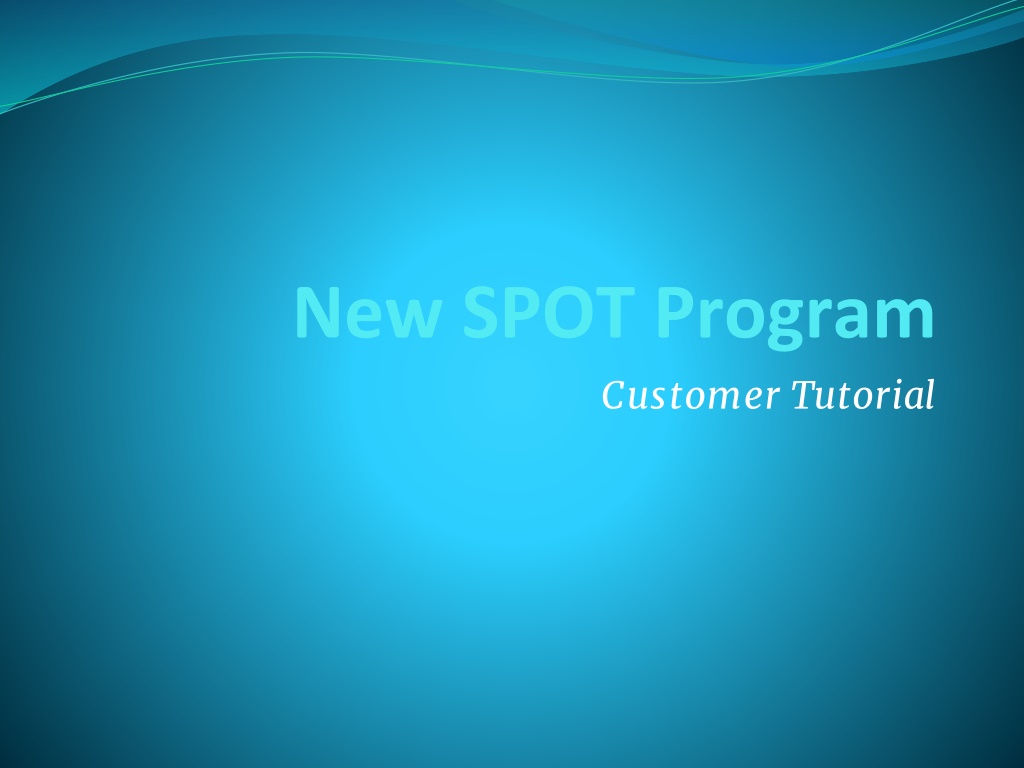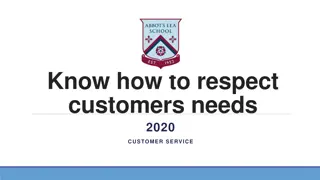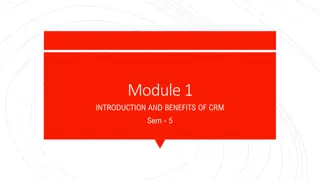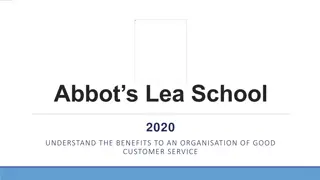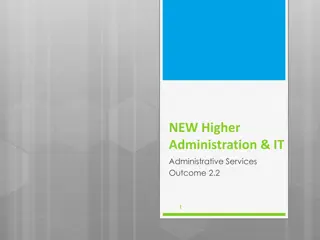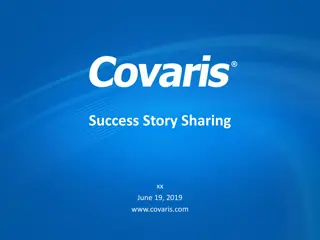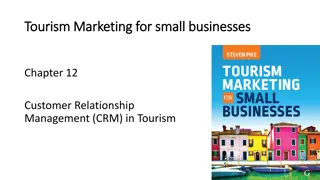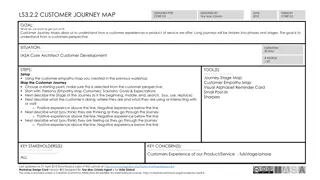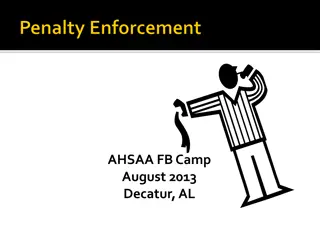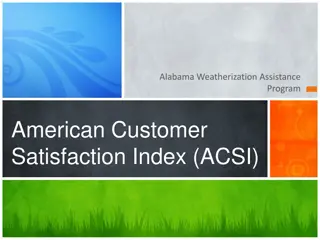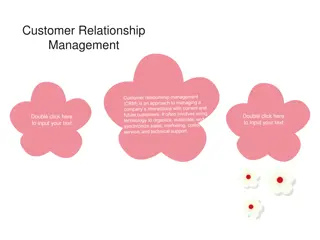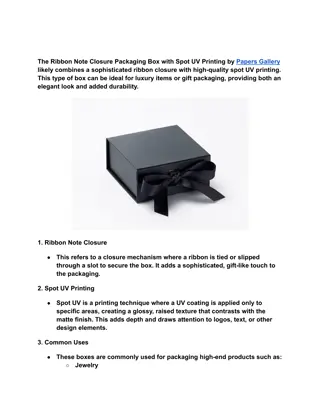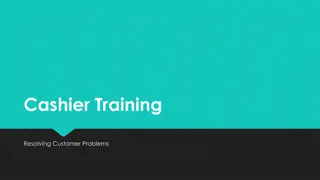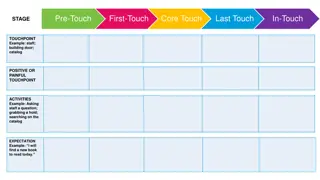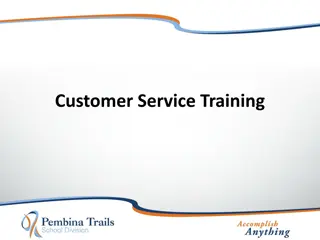Enhancing the New SPOT Program Customer Tutorial
Introducing enhancements to the New SPOT Program, including a consolidated web presence, Google mapping interface, and use of a relational database. Changes to the front page allow users to access a national page, eliminating multiple start pages. The incident location feature uses Google Map functions for precise location marking. Understanding the importance of incident location is crucial for directing requests to the appropriate forecast office. Updates to the spot request submission process streamline selecting incident types, providing tailored weather elements to customers.
Download Presentation

Please find below an Image/Link to download the presentation.
The content on the website is provided AS IS for your information and personal use only. It may not be sold, licensed, or shared on other websites without obtaining consent from the author.If you encounter any issues during the download, it is possible that the publisher has removed the file from their server.
You are allowed to download the files provided on this website for personal or commercial use, subject to the condition that they are used lawfully. All files are the property of their respective owners.
The content on the website is provided AS IS for your information and personal use only. It may not be sold, licensed, or shared on other websites without obtaining consent from the author.
E N D
Presentation Transcript
New SPOT Program Customer Tutorial
General Purpose/Requirements The purpose of the New Spot Webpage is to build upon the functionality of the existing spot page, and incorporate these new general requirements: One consolidated web presence Google mapping interface All hazard applicable Relational database
Front Page Changes User now accesses ONE national page. Eliminates need for 122+ start pages Ensures correct office gets request User can monitor areas covering multiple forecast areas
Incident Location Uses Google Map functions for the user to drag and drop marker to spot location, including zoom capability. Three geographic location boxes will prefill based on placement of marker: Lat/Lon Decimal Degrees Lat/Lon Deg/Min/Sec U.S. National Grid Coordinates The user can also enter this information manually using format of choice. Other two boxes will prefill, and map will zoom to help refine location if needed. Disclaimer statement (Note 3) alerts user that if the lat/lon is not entered in WGS 84/NAD 83 the location of the spot may be incorrect.
Importance of Incident Location Important for customer to get location right, so the right forecast office gets the request. The new Spot web page will now determine which forecast office is responsible for the request. Fire Weather Area of Responsibility (AOR) boundaries are used for fire type requests. County Warning Area (CWA) boundaries are used for all other requests.
Submit Spot Request Changes New step is to select the incident type like Wildfire or HAZMAT Land . Selection is important because it determines what weather elements will be offered to the customer on the next page of the request form. This is a major enhancement over the old page. For example, marine elements are not needed for wildfire requests.
Submit Spot Request Notes When the Submit button is pressed, page two of the form appears. This form is tailored by the responsible forecast office per requested incident type. A WFO can configure the offered forecast formats, time steps, and forecast elements. Required fields are highlighted in red. Top section added a field for email address. The Fire Weather Supplemental Information section shown in the example will disappear for non-fire requests.
Spot Request Required fields are highlighted in red. There is a Deliver Forecast" time and a "Forecast Starting time. Note - "Forecast Starting time can only be within 24 hours of Deliver Forecast time. To request recurring spot forecasts, the customer must contact the WFO. A WFO can configure the offered forecast formats, time steps, and forecast elements. Therefore, the forecasts formats and elements may not be consistent for all locations.
Submit Spot Request Notes Weather Elements requested section has been considerably revamped. Forecast Deliver date/time has been added. Users can get forecasts ASAP or enter in when the forecast is needed. An STQ will be created for a request when the Forecast Deliver time is within the next 6 hours. Ignition date/time has been replaced with the Forecast Start date/time. Note - "Forecast Starting time can only be within 24 hours of Deliver Forecast time. The first forecast period will be dynamic based on the Forecast Start Time. For example today , tonight , this afternoon , etc.
Submit Spot Request Notes Customer can now select the following (dependent on what responsible WFO offers): Forecast format - Narrative only, both Narrative and Tabular, and Tabular only Tabular time interval for each period (if applicable) Each incident type has a required minimum set of forecast elements that must be offered Additional elements may be offered by the WFO and can vary based on incident type Easier to select/deselect weather elements by period and by weather element. Added the ability to request the Hysplit model output.
HYSPLIT Feature There is a radio button on the Spot Request page to request a HYSPLIT Trajectory run. The HYSPLIT model will run per its current defaults in the current spot webpage. NAM 12 Static levels of 500, 1500 and 3000 AGL Trajectory run based on ignition time only The output is emailed to the address input at the top of the request form. There may be more options available to customize these runs in the future.
Fire Forecast Elements Fire Core elements (selectable by the user by forecast period): Sky/Weather Max/Min Temperature Max/Min Humidity Wind (20 FT) Prescribed Fire Core elements (selectable by the user by forecast period): Sky/Weather Max/Min Temperature Max/Min Humidity Start Temperature Start Humidity Wind (20 FT) Start Winds *NOTE: For Fire and Prescribed Fire, regardless of what the user selects, GFE formatters will produce forecasts of Sky/Weather, Max/Min Temperature, Max/Min Relative Humidity, and Winds for 3 periods as required by NWS Directive 10-401 4.3.2. All other elements are selectable by the user by forecast period.
Hazardous Materials Elements HAZMAT Land Core Elements Sky/Weather Max/Min Temperature Max/Min Humidity Wind Dew point Probability of precipitation HAZMAT Inland Waterway Core Elements Sky/Weather Max/Min Temperature Max/Min Humidity Wind All elements are selectable by the user by forecast period.
Search and Rescue Elements SAR Land Core Elements Max/Min Temperature Max/Min Humidity Wind Dew point Probability of precipitation SAR Water Core Elements Sky/Weather Max/Min Temperature Max/Min Humidity Wind Significant Wave Height All elements are selectable by the user by forecast period.
More Elements Marine Core Elements Sky/Weather Max/Min Temperature Max/Min Humidity Wind Significant Wave Height Other Core Elements Sky/Weather Max/Min Temperature Max/Min Humidity Wind All elements are selectable by the user by forecast period.
Submit Spot Observation Notes Observation entry is a bit more standardized with the use of dropdown menus. Pressing the submit button will send a STQ notification message to the WFO just like the old web page did.
Monitor Spot Forecasts Map Significant overhaul of this page. In the current Spot, every Forecast Office has their own page. In the new Spot, each user can set the area they want to monitor by zooming. The monitor area can include areas of responsibility of multiple Forecast Offices. Map uses Google API, so anyone can zoom in and out/shift map.
Monitor Spot Forecasts Table Current Spot only lists requests on one calendar day. New Spot Monitor has all incidents on one page. When an incident is finished, then the incident will be closed by the forecast office. Closing an incident will move all information and forecasts into an archive.
Monitor Spot Forecasts Notes On the current Spot, multiple requests for the same incident would clutter up the display with multiple lines. On the new Spot, there will only be one line per incident. Only the latest forecast will be available. Requests can be corrected from the Monitor Spot Forecasts page via Change Request.
Monitor Spot Forecast Submit Obs A Submit Obs link has been added for each incident in the table in the Action column. This allows customers to enter observations for an incident without having to submit a new request. All observations for the incident will be databased and available to the forecaster. Forecasters will not need to look at multiple requests to analyze observations.
New Spot Forecast Page NWS Actions will appear for responsible WFO (or back-up) only. These will not appear for customers.
Spot Forecast Page Notes: Maps now use Google API interface. All Observations submitted for an incident will be listed on the Spot Forecast page.
New Forecast Page *NEW! *NEW!
Forecast Page Immediate Forecast Update New Action: Request Immediate Forecast Update link on bottom of forecast page. If a customer realizes that the forecast is not representative of current conditions, then they would click this link to get an immediate updated forecast. If an NWS forecaster realizes the forecast is not representative or will become unrepresentative, they would click this link to start the process of updating the forecast.
Forecast Page Immediate Forecast Update The customer, not the NWS forecaster, will be allowed to edit the information related to the request. There will be, however, an opportunity to enter in new observations. If the customer realizes that the forecast is off, then it would be nice to submit an observation that would help the NWS create a new forecast.
Forecast Page Copy Info There are now 2 different Copy Info options: Copy Info into Spot Request for New Incident Customers use this link to retain all of the their contact information for a specific incident type, but request a spot for a new and separate incident. Copy Info into New Spot Request for this Incident The customer will use this link to get another forecast for the same incident. Unlike Request Immediate Forecast Update , the customer will get Page 2 of the request process. Weather elements can be adjusted and the forecast delivery date/time can be changed, etc. This allows customers to easily schedule the next needed forecast for an incident without having to re-enter most of the information. Allows new observations submitted to remain with the request. The lat/lon of the incident cannot be changed with this
Experimental Service Comments Comments on the New Experimental Spot Webpage are being collected at: www.nws.noaa.gov/survey/nws- survey.php?code=SPOTWEBPAGE from June 1 December 31, 2015.
Additional Requirements are Being Considered for Future Versions of the Spot Webpage: Add the ability to email a copy of the forecast. Subset distinction of prescribed fire (i.e. pile burns, broadcast burns)..The idea is that this distinction would be made on the second page after the user selects prescribed fire. Build a web interface to add an element to the optional list of forecast elements in the CMS database. Have the spot program be connected with the radar and lightning data sets (via AWIPS) so that forecasters are alerted when thunderstorms approach the spot request site. Add the ability to select different models and trajectory levels for the HYSPLIT trajectory runs. Add the ability to select particular elevation levels for specific weather elements to help reduce the elements list (winds aloft, ridgetop winds, mid- level Haines Index, etc.)
